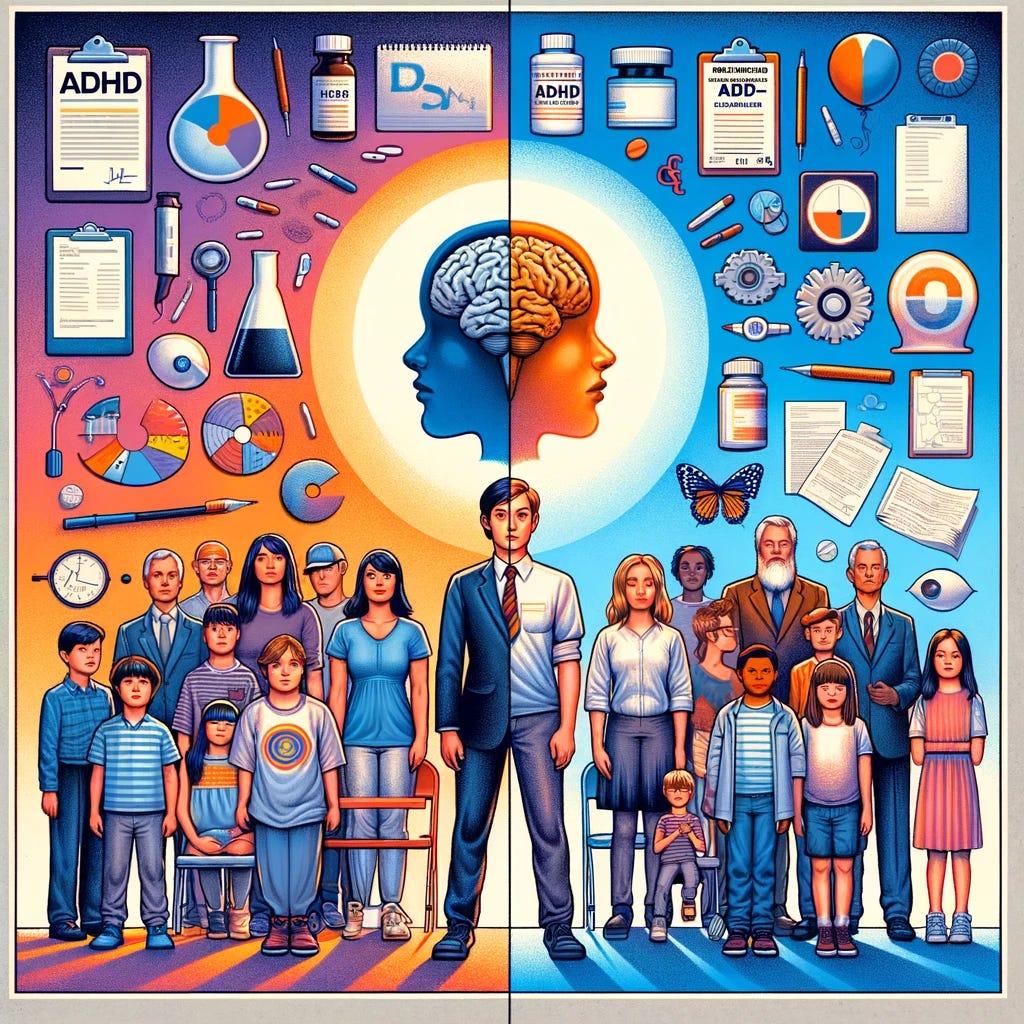Is ADHD now more of an identity than a disorder?
Attention-deficit/hyperactivity disorder (ADHD) has long been a hot topic in the medical and mental health communities. Characterized by symptoms such as impulsivity, hyperactivity, and difficulty focusing, ADHD has been commonly seen as a disorder that needs to be treated or managed. However, in recent years, there has been a growing movement that challenges this perspective and instead views ADHD as more of an identity rather than a disorder. So, the question is, is ADHD now more of an identity than a disorder?
Let's start by defining ADHD. According to the DSM-5, ADHD is a neurodevelopmental disorder that is characterized by a pattern of hyperactivity, impulsivity, and/or inattention that significantly interferes with daily functioning and development. It is typically diagnosed in childhood but can continue into adulthood. However, the diagnosis of ADHD has been a subject of controversy for decades.
On one hand, there are those who argue that ADHD is a valid psychiatric disorder with a biological basis, supported by brain imaging studies and genetic research. On the other hand, there are those who argue that ADHD is overdiagnosed and that the symptoms of ADHD are simply part of normal human behavior. This latter perspective is where the idea of ADHD as an identity comes into play.
Those who view ADHD as an identity argue that it is not a disorder that needs to be treated or fixed, but rather a way of being that should be embraced and celebrated. They believe that individuals with ADHD possess unique qualities and strengths, such as creativity, spontaneity, and a non-traditional way of thinking. They argue that by pathologizing ADHD, we are stigmatizing and limiting those with the diagnosis.
So, is there any truth to this perspective? Is it possible that ADHD is now more of an identity than a disorder?
To answer this question, we need to first examine the history and cultural context of ADHD. The concept of ADHD has evolved over time, from "minimal brain dysfunction" in the 1960s to "hyperkinetic disorder" in the 1970s, and finally to ADHD in the 1980s. Each name change reflects a shift in how we understand and view the condition.
In the 1970s and 1980s, ADHD was seen as a disruptive behavior disorder and was primarily diagnosed in boys. However, in recent years, there has been a significant increase in the diagnosis of ADHD in girls and adults. This shift has led to more awareness and recognition of the diverse ways in which ADHD can present, challenging the traditional stereotypes of the disorder.
Furthermore, the rise of social media and online communities has given a platform for individuals with ADHD to share their experiences and connect with others who also identify with the ADHD label. These communities often center around the idea of embracing ADHD as an identity and eschewing traditional medical interventions.
But how do these viewpoints affect those who are diagnosed with ADHD? On one hand, the idea of ADHD as an identity can be empowering for individuals who may have previously felt ashamed or stigmatized by their diagnosis. It allows them to see their differences as strengths and find a sense of belonging in the ADHD community.
However, on the other hand, the dismissal of ADHD as a disorder can also be harmful. For some individuals, medication and therapy can be life-changing and allow them to manage their symptoms and lead successful lives. By rejecting the idea of ADHD as a disorder, we may be disregarding the real struggles and challenges that individuals with ADHD face on a daily basis.
Moreover, viewing ADHD as an identity rather than a disorder ignores the fact that there is significant research and evidence supporting the biological basis of ADHD. Brain imaging studies have shown differences in brain structure and function in individuals with ADHD, and genetic studies have identified potential gene variations associated with the disorder. Additionally, individuals with ADHD are at a higher risk for other mental health disorders, such as anxiety and depression, further highlighting the importance of recognizing and treating ADHD as a disorder.
So, while embracing ADHD as an identity can be empowering for some, we must also acknowledge and validate the real struggles and challenges that come with the disorder. It is possible to hold both perspectives simultaneously, to recognize the unique strengths and experiences of individuals with ADHD while also recognizing the need for treatment and support.
In conclusion, the idea of ADHD as an identity rather than a disorder is a complex and nuanced debate. While it is important to challenge the stigma and stereotypes associated with ADHD, it is also crucial to recognize and support those who may benefit from medical interventions. ADHD may have evolved from a disorder to an identity, but it is ultimately up to the individual to decide how they want to define their ADHD and what label, if any, they choose to embrace. Let us strive for inclusivity and understanding, rather than a dichotomy between identity and disorder.

